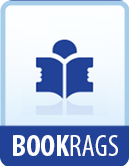CHAPTER II.
TOWARDS AUSTRALIA.
Although my mother’s family had lost heavily by him, her mother gave us 500 pounds to make a start in South Australia. An 80-acre section was built for 80 pounds, and this entitled us to the steerage passage of four adults. This helped for my elder sister and two brothers (my younger brother David was left for his education with his aunts in Scotland), but we had to have another female, so we took with us a servant girl—most ridiculous, it seems now. I was under the statutory age of 15. The difference between steerage and intermediate fares had to be made up, and we sailed from Greenock in July, 1839, in the barque Palmyra, 400 tons, bound for Adelaide, Port Phillip, and Sydney. The Palmyra was advertised to carry a cow and an experienced surgeon. Intermediate passengers had no more advantage of the cow than steerage folks, and except for the privacy of separate cabins and a pound of white biscuit per family weekly, we fared exactly as the other immigrants did, though the cost was double. Twice a week we had either fresh meat or tinned meat, generally soup and boudle, and the biscuit seemed half bran, and sometimes it was mouldy. But our mother thought it was very good for us to endure hardship, and so it was.
There were 150 passengers, mostly South Australian immigrants, in the little ship. The first and second class passengers were bound for Port Philip and Sydney in greater proportion than for Adelaide There was in the saloon the youthful William Milne, and in the intermediate was Miss Disher, his future wife. He became President of the Legislative Council, and was knighted. There was my brother, J. B. Spence, who also sat in the Council, and was at one time Chief Secretary. There was George Melrose, a successful South Australian pastoralist; there was my father’s valued clerk, Thomas Laidlaw, who was long in the Legislative Council of New South Wales and the leading man in the town of Yass. “Honest Torn of Yass” was his soubriquet. Bound for Melbourne there were Mr. and Mrs. Duncan, of Melrose, and Charles Williamson, from Hawick, who founded a great business house in Collins Street. There were Langs from Selkirk, and McHaffies, who became pastoralists. Our next cabin mate, who brougut out a horse, had the Richmond punt when there was no bridge there. All the young men were reading a thick book brought out by the Society for Promoting Useful Knowledge about sheep, but they could dance




